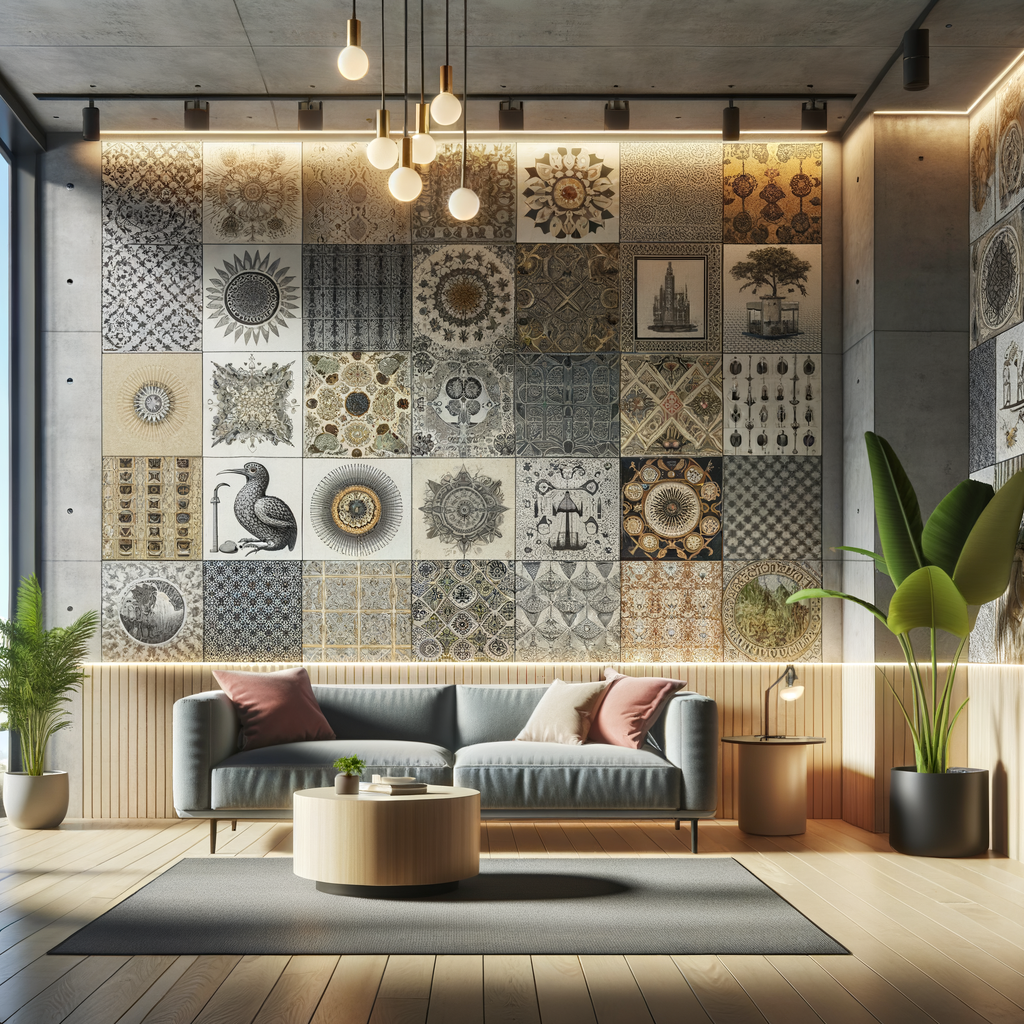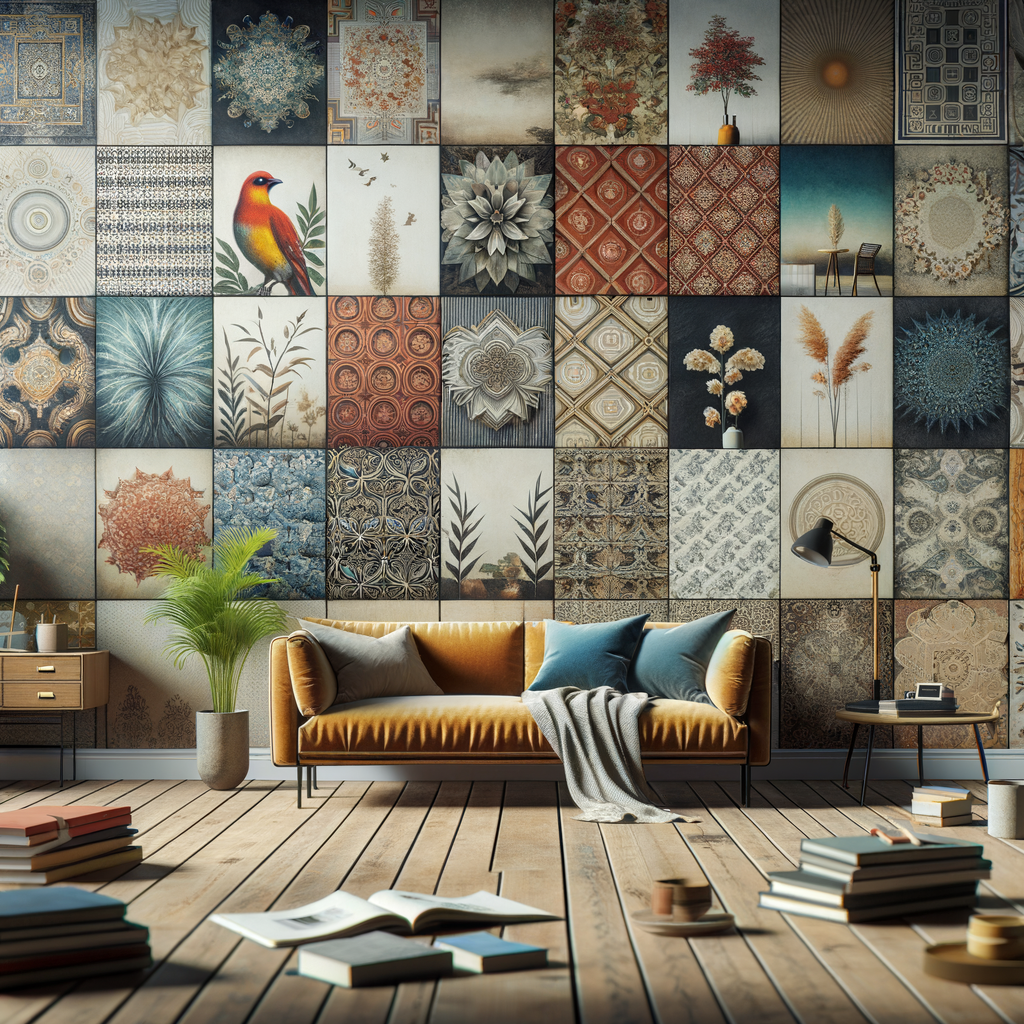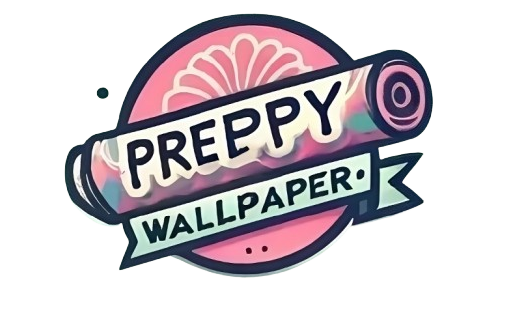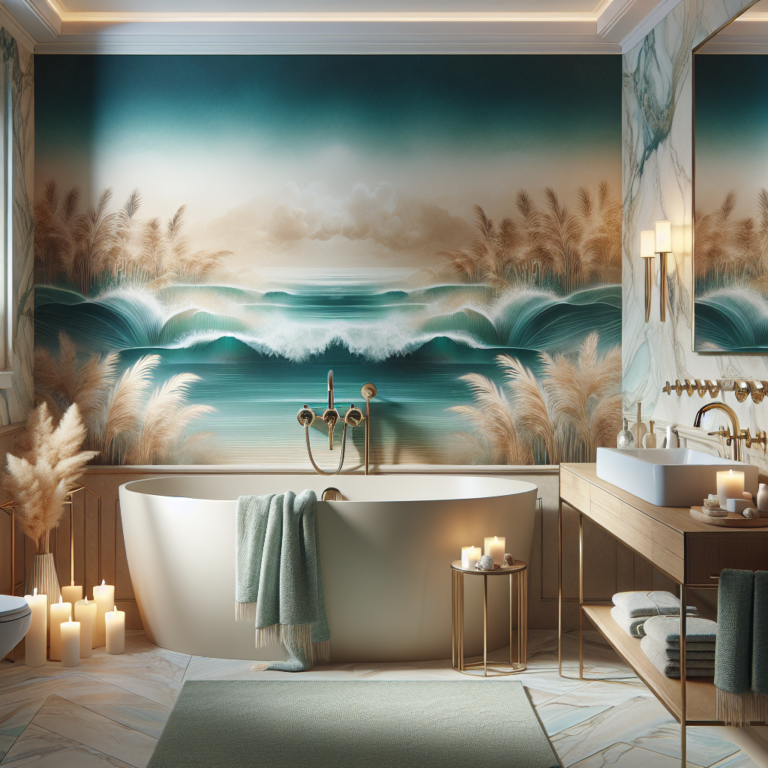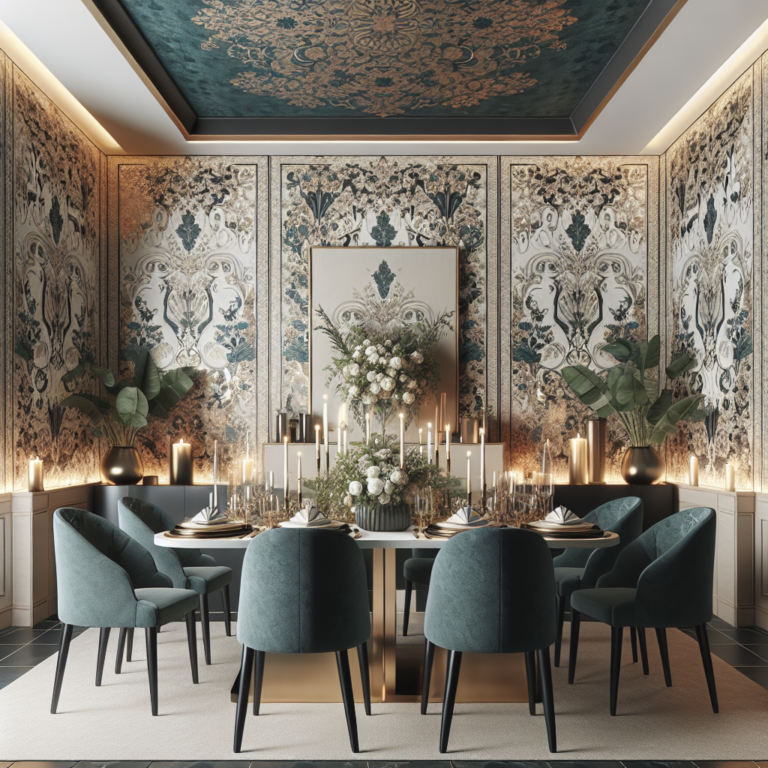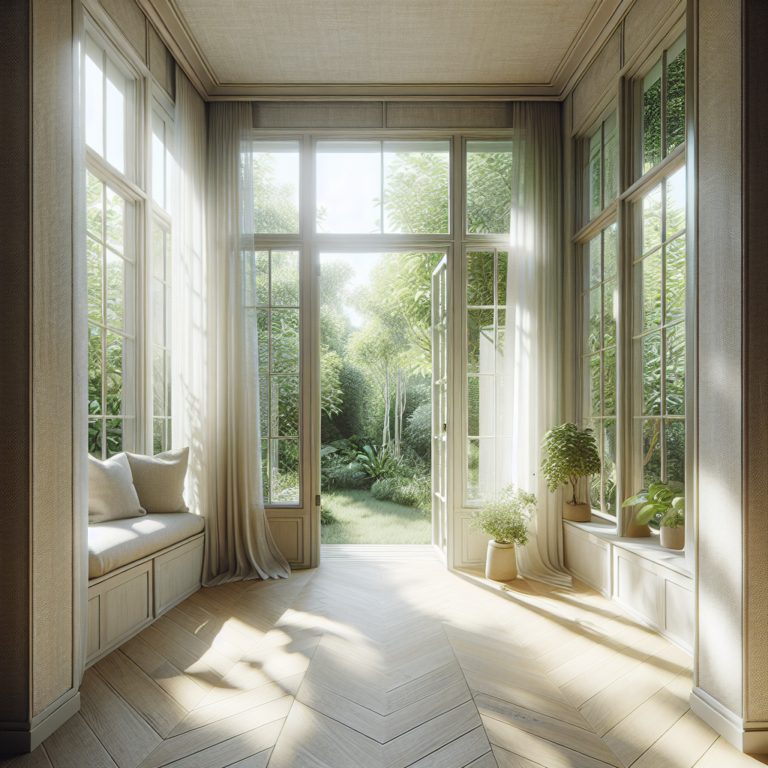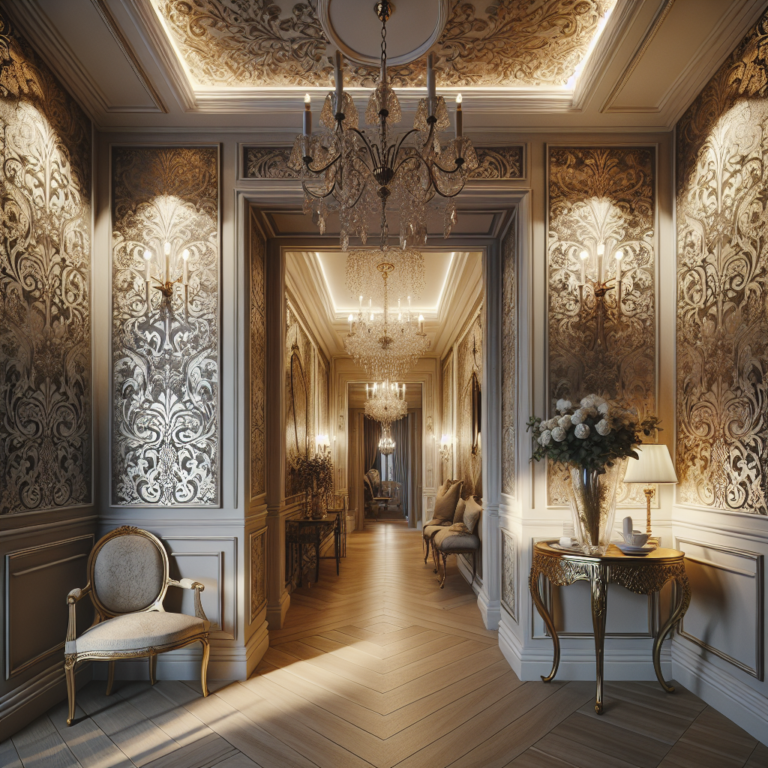Textured Wallpaper: Adding Depth and Character to Your Rooms
Understanding Textured Wallpaper
Textured wallpaper has surged in popularity, playing a crucial role in modern interior design. Unlike traditional flat wallpaper, textured options help create a multidimensional look. By introducing various materials and finishes, you can transform an ordinary wall into a stunning focal point. Have you ever thought about how your choice in wallpaper can impact the overall feel of a room? When you choose textured wallpaper, you’re not just picking a design; you’re setting the mood for the entire space.
From understated elegance to bold statements, textured wallpaper provides endless opportunities for customization. Different textures can evoke different emotions. For instance, a rough, natural finish can create a feeling of warmth and coziness, reminiscent of rustic cabins or beach houses. On the other hand, smoother textures can exemplify sophistication, reminiscent of high-end boutiques. So, why not dive into the world of textured wallpapers and see how they can revolutionize your home’s ambiance?
Types of Textured Wallpaper
The beauty of textured wallpaper lies in its variety. There’s a plethora of materials to choose from, each offering its own unique flair. Vinyl textured wallpaper is a common choice due to its durability and ease of cleaning, making it perfect for busy families or high-traffic areas. Fabric wallpaper, on the other hand, adds a touch of luxury and warmth. Imagine wrapping your walls in gorgeous textiles that not only look good but also feel good!
Additionally, there are natural options like grasscloth and bamboo. These wallpapers can add an earthy touch, bringing nature indoors and providing a sense of tranquility. If you’re feeling adventurous, consider metallic textures that shine and shimmer, perfect for making a statement in modern spaces. Understanding these different types of textured wallpaper empowers you to select one that aligns perfectly with your design vision.
Choosing the Right Texture for Your Space
When it comes to choosing the right texture for your room, consider the size and function of the space. In smaller rooms, opting for lighter textures can create a sense of spaciousness. Conversely, larger rooms can benefit from bolder, thicker textures that add depth and character. Think about the mood you want to evoke. Do you envision a serene bedroom oasis or a vibrant entertaining area? The choice of texture can significantly influence how you feel in a space.
Furthermore, consider the other elements within the room. The wallpaper should complement furniture, artwork, and flooring. If you have a lot of intricate wood furnishings, a subtle wallpaper texture can enhance rather than overpower the existing decor. Don’t forget about lighting! The interplay between texture and light can dramatically change the appearance of wallpaper. Soft lighting can accentuate textures by creating beautiful shadows and highlights; therefore, test your wallpaper in various lighting conditions before making a final decision.
Painting vs. Textured Wallpaper
Now, you might be wondering: should I paint or opt for textured wallpaper? While painting offers flexibility and a quick refresh, textured wallpaper provides a visual intrigue that paint simply can’t match. Imagine walking into a room where the walls have an inviting texture, pulling you in and making you feel at home. Paint may be easier to change, but textured wallpaper can create a dimension that brings a room to life.
Moreover, textured wallpaper is often more durable than a typical paint job. High-quality wallpaper can withstand wear and tear, making it an excellent investment. Think of it as a canvas that brings your walls to life, unlike paint that can fade or peel over time. If you’re looking for a timeless update that also stands the test of time, textured wallpaper could be your answer.
Applying Textured Wallpaper: Tips and Tricks
Applying textured wallpaper can be a rewarding DIY project, provided you appreciate a few essential tips. Start by preparing your walls. A clean, smooth surface is crucial for wallpaper adhesion. Remove any old wallpaper and fill in any cracks or imperfections. Once the surface is ready, measure and cut your wallpaper correctly, allowing for patterns to match. This ensures a seamless look that adds to your room’s character.
Adhesive is key! Depending on the wallpaper type, you might need paste, glue, or peel-and-stick options. Always follow the manufacturer’s instructions to achieve the best results. When hanging, work from the top down to avoid air bubbles and wrinkles. Using a wallpaper smoothing tool can help. And don’t forget: Patience is your best friend during this process. Take your time, and the final result will be well worth it!
Creating a Focal Point with Textured Wallpaper
One of the fantastic things about textured wallpaper is its ability to serve as a focal point in a room. Imagine stepping into a living room where one wall is covered in a stunning brick-effect wallpaper—it immediately draws the eye and creates an atmosphere of comfort. To master the art of creating a focal point, consider which wall in your room is best suited for this transformation. Usually, it’s the wall behind a sofa or your bed that can benefit most from textured wallpaper.
Furthermore, pairing your textured wallpaper with thoughtful decor can enhance its effect. For instance, artworks, mirrors, and lighting can complement and highlight the textured wall. Think of it as a stage: the wallpaper sets the scene, while your decor plays the characters. This partnership not only elevates the aesthetics of the room but also makes it feel cohesive and well-designed.
Maintenance and Care for Textured Wallpaper
Taking care of textured wallpaper might seem daunting, but it’s less complicated than you might think. Most wallpaper can be easily maintained with a soft brush or a damp cloth. For those made of vinyl, a gentle wipe-down occasionally is all they need to keep looking fresh. However, if your wallpaper is made of fabric or natural materials, you’ll want to be more cautious to prevent damage or discoloration.
Additionally, consider the environment you have your wallpaper in. High-humidity areas like bathrooms may require specific kinds of wallpaper to resist moisture. Keep an eye on the condition of your wallpaper to spot any signs of wear early on. Timely maintenance extends the life of the wallpaper and keeps your room looking its best for years to come.
Conclusion
Textured wallpaper is an exceptional way to add depth and character to your rooms. By understanding different types of textures and how to choose the right one, you can enhance your home’s ambiance dramatically. It’s not just about making a statement; it’s about creating an experience. Whether you want to transform a cozy nook or a lively gathering space, textured wallpaper may be the perfect fit for your vision. So go ahead, explore the endless possibilities of textures and colors, and give your walls the love they deserve!
FAQs
1. What are the benefits of using textured wallpaper?
Textured wallpaper offers depth, aesthetic appeal, and can conceal imperfections on walls. It provides a unique look that paint often cannot match.
2. How do I choose the right textured wallpaper for my space?
Consider the room’s size, function, and existing decor when selecting textured wallpaper. Match the texture to the overall mood you want to create.
3. Can I apply textured wallpaper myself, or should I hire a professional?
You can apply textured wallpaper as a DIY project, especially if you’re detail-oriented. However, hiring a professional can ensure a flawless finish, especially for complex patterns.
4. How do I maintain and clean textured wallpaper?
Most textured wallpaper can be maintained with a soft brush or damp cloth. However, be cautious with delicate fabrics or natural textures to avoid damage.
5. Does textured wallpaper work in all rooms, including bathrooms and kitchens?
While textured wallpaper can be used in many areas, ensure you select a moisture-resistant option for high-humidity areas like bathrooms and kitchens.
Below are some great examples of these types of designs: